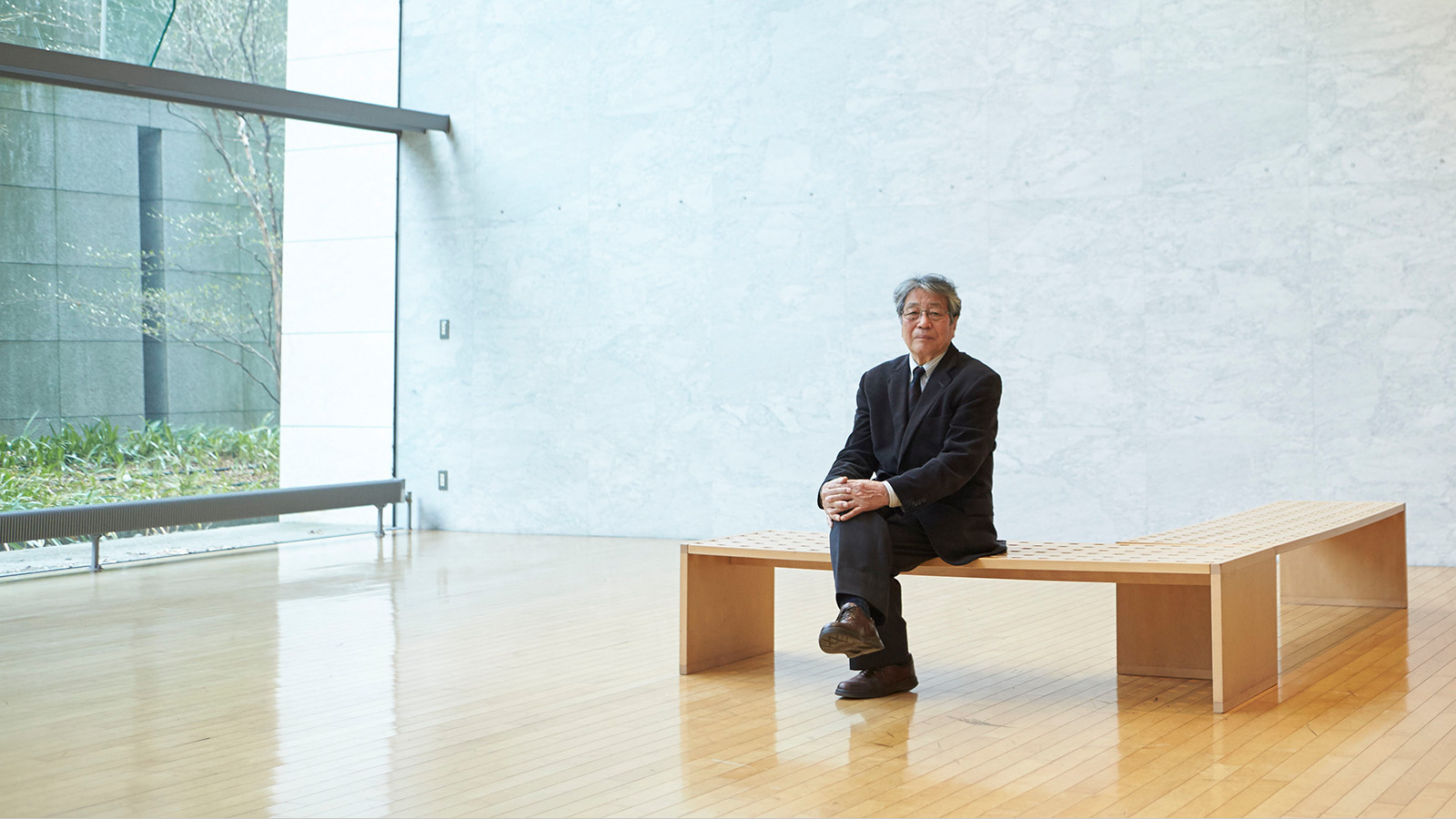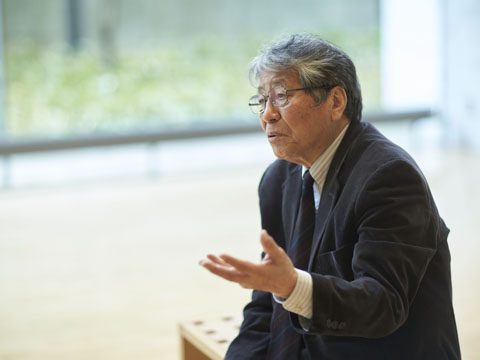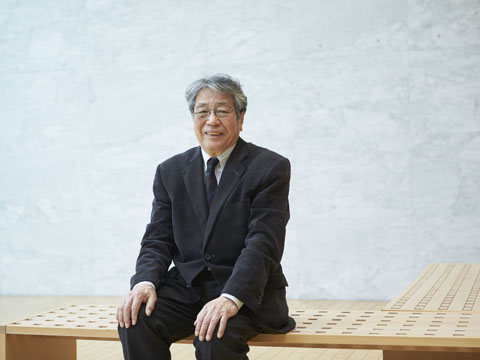
Column文化遺産コラム
The Japan Consortium for International Cooperation in Cultural Heritage: Another path charted by Ikuo Hirayama
03.08.2016

Interviewee Kosaku Maeda
Professor Emeritus, Wako University
Vice-chairperson, the Japan Consortium for International Cooperation in Cultural Heritage
A specialist in the history of Asian culture and philosophy, Dr. Maeda has participated in field work in the regions of West Asia and South Asia for many years, starting with an archaeological study of the ruins of Bamiyan in Afghanistan in 1964.
He has played a major role in preservation projects, particularly at Bamiyan, and he continues to send messages to the world the importance of protecting cultural heritage under conflict.
An idea whose time had come
Ikuo Hirayama and the establishment of the JCIC-Heritage
It is impossible to discuss the founding of the Japan Consortium for International Cooperation in Cultural Heritage without mentioning the role of Ikuo Hirayama. As a man of many great achievements, one might have thought that Dr. Hirayama would be difficult to in touch, but nothing could be further from the truth. It’s said that during his time as an assistant at the Tokyo University of the Arts he lived in a decrepit tenement boarding house, and perhaps it was that experience that made him such a warmhearted, loving figure.
I am reminded of one episode during his time as an assistant. Due to the effects of Japonism, there was at the time an increase of interest in Japanese culture among the French. Apparently the French embassy asked Dr. Hirayama to teach a course on Japanese art, since he was able to speak French. On the same day every week, a luxury automobile would come to pick him up in front of the decrepit tenement, and apparently this sparked rumors in the neighborhood about just what kind of a person was living there.
I think that this episode conveys the essence of Dr. Hirayama’s personality. It reminds us in particular of his strong devotion to the arts from a young age, and of his strength of personality, which meant that as long as he was doing something that he believed in, he didn’t worry about what others thought of him.
Did you know?
The JCIC-Heritage started with a budget equal to that of one tailfin of a Phantom fighter jet.
I believe that the reason Dr. Hirayama played such an active role in activities to protect cultural heritage from earlier time was because he himself had traveled extensively in Asia and seen a wide range of sites with his own eyes.
Seeing that so many assets of cultural heritage were at crisis because of damage due to war or destruction by the forces of nature, he sensed a pressing need to do something to protect them. At the same time, he also felt that the time had come for Japan, which then had experienced rapid economic growth, to give something to the international community. It seems to me that these two beliefs came together in his idea of contributing to the international community by peace building through protection of cultural heritage across political and national boundaries. I think that at that time this idea had not yet been developed very clearly, either in Japan or overseas.
I think that Dr. Hirayama’s perspective based on the history of all humanity and his strong belief that there was a pressing need to create a venue for discussion and cooperation in Japan linking the public and private sectors to contribute to the international community were related to the process of establishing the JCIC-Heritage. It’s said that Dr. Hirayama, who recognized that it would be impossible to advance the massive project of contributing to the international community through protection of cultural heritage without the public and private sectors and foundations working together, told the government, “We do not need a lot of money. Just give us a a budget equal to that of one tailfin of a Phantom fighter jet.” Apparently this expression touched the hearts of the politicians of the time. Surely Dr. Hirayama, with his gentle face and his resolute attitude, chose that expression to show that Japan could make a major contribution to the international community with such a trifling amount of money.
About the JCIC-Heritage
The destruction at Bamiyan and the vision of a “Red Cross” for cultural heritage
Dr. Hirayama’s vision of a “Red Cross” for cultural heritage was a concept that called for activities like those of the International Red Cross, which assists people across political and national boundaries based on a perspective grounded in the history of humanity, to address the outflow of cultural heritage. Although he had developed this vision much earlier, it was the destruction of the Buddhas of Bamiyan that first inspired practical steps on the part of researchers, government, and related parties in Japan. That’s why that incident serves as a symbol of the JCIC-Heritage’s founding.
The Bamiyan ruins were destroyed over March 7-11, 2001. Even before then, the Taliban had announced several times that it would destroy them. At that time, Dr. Hirayama was serving as UNESCO goodwill ambassador, and he took leadership worldwide in conveying a wide range of messages calling for preventing their destruction. We also backed his efforts by calling for the support of Japanese academic research teams around the world. We also created a list of researchers who supported Dr. Hirayama’s call. These backup activities later would become the backbone of the JCIC-Heritage’s subcommittees today.
In the end, despite our joint message and efforts, Dr. Hirayama and we researchers were unable to stop the destruction of the Buddhas of Bamiyan by the Taliban. The outcome was quite regrettable. However, it did serve to increase motivation for Japan-wide activities by the Agency for Cultural Affairs, the Ministry of Foreign Affairs, and researchers.
The background of today’s research Part 1
My first study at Bamiyan
In 1964, I went to Afghanistan for the first time. That was the year of the first Tokyo Olympics. For that reason, I was unable to experience the games myself. The upcoming 2020 Olympic Games will be my first Tokyo Olympics.
I was born before World War II, and as a child I knew nothing about Bamiyan or Afghanistan. I’d never even heard of them. Even after the war, the field of Buddhist studies itself was unpopular because it had a boring, old-fashioned image.
In postwar Japan, it was American culture and French culture that were extolled. In my case, I happened to be exposed to French culture. I watched numerous French films and even dabbled in French literature back then.
I was fortunate in that this led to the opportunity to join a trip to Afghanistan. I was asked to assist the delegation because at that time Afghan high officials spoke only French. When I got to Afghanistan, I visited government offices alone to submit the relevant application forms. To be honest, I was negotiating with government officials every day and did not really take part in academic studies. We were able to visit Bamiyan as a result of these negotiations conducted in French and broken Dari. It really wore me out. Afterward, I was in bed for about two weeks.
The background of today’s research Part 2
Studying the massive ruins of Bamiyan alone
While one goal of the study team was to cross the Hindu Kush on horseback like Xuanzang, I asked them to go ahead without me while I remained behind. After recuperating for a while, local residents at Bamiyan came to give me advice on recovering and chat on various subjects, concerned about the lone Japanese person convalescing in bed in their midst.
After my recovery, I was able to explore the Bamiyan ruins freely, with no restraints. In the evenings, I translated French reports to Japanese by lamplight, and in the daytime I examined the vast ruins, one at a time. By chance, I happened to find a new grotto never discovered before.
It was a very happy time for me, although it started as something of a slapstick. The Great Buddhas of Japan were built a century after those of Bamiyan. Truly, Bamiyan was the starting place of the world’s Great Buddhas. I had never imagined that I would be able to see them with my own eyes.
A message to children with inquisitive eyes
Children’s interest in a subject is inspired by small things
From time to time I lecture children about excavation work and ancient ruins. When I do so, the children’s reaction is always very interesting. For example, on excavation sites we use winnowing baskets brought from Japan. When they see photographs of these, the children are always surprised and very interested to see such a traditional Japanese tool being used to excavate ruins overseas. Isn’t that interesting?
The children see how a familiar tool that they had thought was used only in Japanese culture is also used overseas, and what’s more, in excavation of ancient ruins. I think that seeing this helps them to recognize the depths of the world around them. Rather than simply seeing something from Japan in a contemporary scene from overseas, I think that this is an experience of their continuity with the world, in which they can sense not only the spatial axis but the time axis as well.
Where should we go next?
A cultural heritage rescue team mobilizing around the world
The vision of a “Red Cross” for cultural heritage also includes an action team. This is a team what would be able to mobilize quickly to deliver aid in the event of any problems. While no such organization has yet been formed, I hope that someday an international organization will form and take actions to aid cultural heritage around the world.
In this field, there are lively activities underway in each individual area of research. Our JCIC-Heritage is an organization that someday will serve as a platform for cross-functional activities. I think that the JCIC-Heritage is the only place where government, researchers, the private sector, and foundations can exchange opinions at the same table without holding back, to build consensus. In the future, I would like Japan to strengthen its presence in the world by contributing to the international community in peaceful and comprehensive ways through protection and use of cultural heritage, on a truly Japan-wide basis built on stronger ties with private-sector and foundations. I also hope that the government will perform its responsibilities in this area, as a legislative body.






